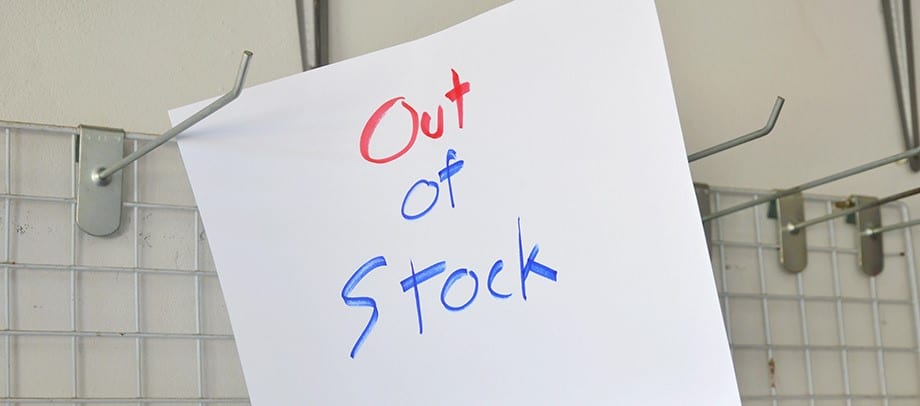Dealing with the hype and crowds that come along with viral popularity is a problem many businesses would like to have.
So, if your biggest business problem is having too many customers you’re doing pretty well, right?
Well, yes and no, says Raph Freedman, who recounts how his Peak Chocolate pre-workout bar was brutally shot down on Shark Tank in 2017 only to bounce back in epic fashion almost immediately, when the television show sparked intense online interest.
“I remember watching the show and just cringing because it was obviously a bit embarrassing. But at the same time, I could hear non-stop sale notifications from my phone going ding, ding, ding the whole episode,” Freedman says.
“In a regular month before going on Shark Tank we’d sell about $15,000 of product in a month. In the 24 hours after going on the show we sold $25,000 worth.”
But, looking back, Freedman says Peak Chocolate wasn’t ready to truly capitalise on all the interest, and it’s a tale many businesses that have a sudden surge in popularity can report.
Here are four insights he and others who have been through similar situations have learnt.
1. Capture customer interest
In the 24 hours after appearing on national television, Peak Chocolate’s website traffic shot up but the conversion rate was just 1%, vastly below their typical average.
“We were getting tonnes of traffic but I should have had more marketing stuff set up – e.g. retargeting, Google Analytics – to capture as much information about the customers that came to the website as possible,” Freedman says.
“If I had captured 20,000 email addresses the night the episode aired that would have made me way more money in the long run than just the people who went and purchased right away.”
2. Be prepared – implement robust logistics
Another essential viral popularity survival tip is having robust logistics in place, says Lori Phegan of The Inappropriate Gift Co, which shot to fame in 2018 after also appearing on Shark Tank.
“We had previously had one product go viral – a mug that reached over 14 million people on social media – and we used that experience to set up our processes,” she says.
“We outsourced our warehouse, pick pack and sending so that a large number of orders could be processed per day.”
If you’re expecting viral popularity, using a website server capable of handling a massive influx of visitors is also important, Phegan advises.
“During the show, our website visitors reached over 6,000 concurrent users. The maximum previously had been around 20 live at any one time,” she says.
3. Retain customer interest
In order to capitalise on viral popularity and maintain growth, Freedman stresses the importance of attracting repeat customers.
“I’d much rather have 500 people who spend $50 each month than 50,000 spend $1 and get one pack of Peak Chocolate every four months,” Freedman says.
“What’s been the most critical is setting up proper marketing and sales funnels for each type of product – proper funnels that you can tweak and monitor to take people from slight awareness about the product all the way to becoming a raving fan and buying a subscription.”
It’s a sentiment Phegan echoes.
“The real deal for any business is repeat customers – are your customers coming back? And are you increasing your customer lifecycle spend?” she says.
“We now have in excess of 50,000 subscribers across the world. They get three newsletters a week – Monday is ‘Meme Madness’, Wednesday is ‘WTF Wednesday’ and Friday is ‘Inappropriate Gift of the week’.
“The aim of our newsletters is to build a community united in inappropriate humour, rather than just sell products. I know from my own experience that I don’t click on many of my subscriber emails unless I get value from it.”
4. Live and learn
There’s another way of surviving viral popularity, and that’s just taking it as it comes, says Jessica Thomas, founder of Dogshare, a platform that connects dog owners with people willing to help take care of their pets.
“Our product was not really ready for the growth we had. It’s taken us a further two years to catch up in terms of our product being developed to a level that I’m happy with,” Thomas says.
“You could say that not being prepared enough for the growth in customers was a mistake, but I’ve since heard a theory that helps to explain why this strategy can work.”
Thomas says the theory goes that you should be embarrassed by your first product launch because if you wait to invest in a fully-fledged product, two consequences can occur.
“The first is that without establishing if the market wants or needs your product first, you are taking a huge risk that there will be demand for your product at all,” she says.
“The second is if you wait until your product is ‘perfect’ you run the risk of never launching.”
Finally, Thomas says it’s important to remember that the hype may soon end, so hustle to “make hay while the sun shines”.
“Responding to a big spike in attention can also be a very challenging time,” Thomas says.
“For us, we’ve hired a virtual assistant that we’ve been working with for a few years now. Our VA works with us on some regular tasks each week, but also has the capacity to take on additional work during our busy periods.”
If you’re worried a lack of capital might hold you back from making the most of big opportunities, talk to Prospa about how a line of credit could help your business stretch when needed, or how a small business loan could help you invest in your business to meet its potential.








